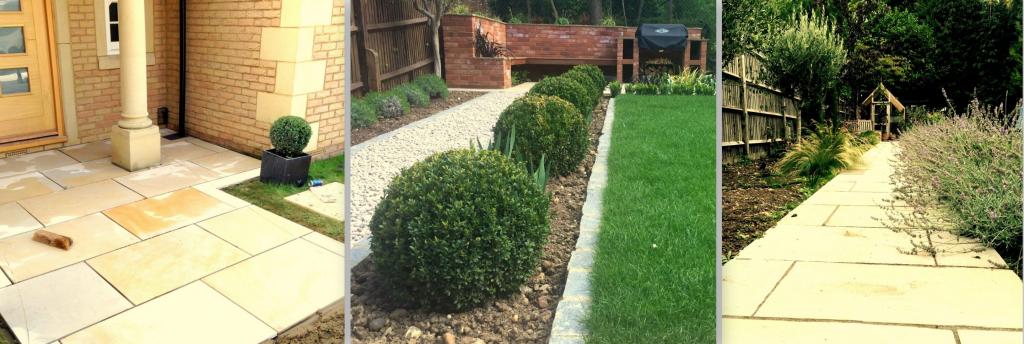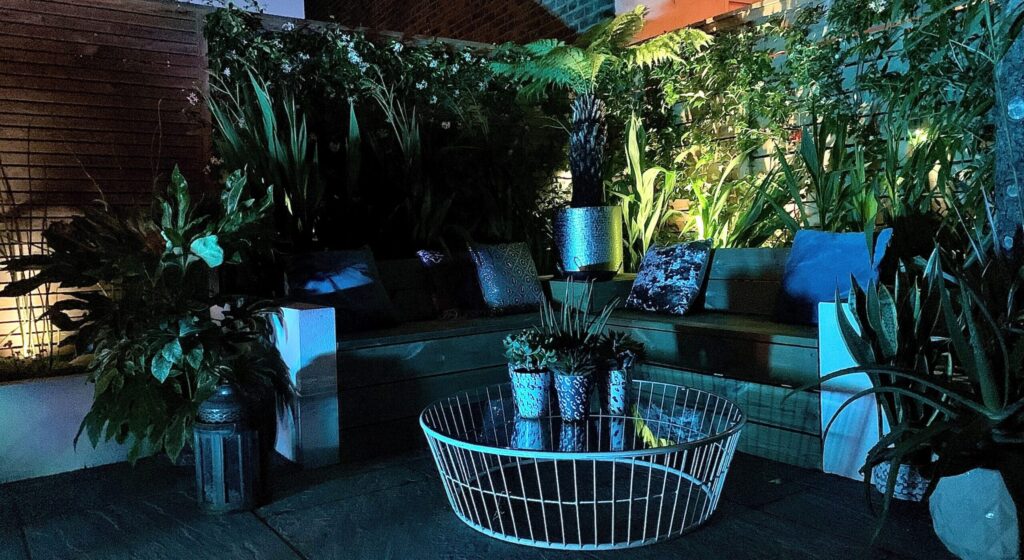sealing Paving
Sandstone paving ⋅granite ⋅ landscaping ⋅ paving ⋅ landscape gardener ⋅ north london ⋅ Islington
SEALING PAVING STONES ⋅ LANDSCAPING⋅ NORTH LONDON
Here’s fertile grounds’ paving sealing guide, including pointing and design tips.
Garden Design ⋅ Paving ⋅ Hertfordshire landscape gardener ⋅ St Albans, Harpenden, Watford. Hertford and Hitchin
Garden Design ⋅ Paving ⋅ London landscape gardener ⋅ Islington ⋅ Stoke Newington ⋅ Hackney ⋅ Richmond ⋅ Hampstead ⋅ Walthamstow ⋅ Blackheath ⋅ Chiswick ⋅ Finchley ⋅ North, South & East London
Garden Design ⋅ Paving ⋅ And ⋅ Hadley wood ⋅ Barnet ⋅ Enfield
![]()
SEALING PAVING STONES ⋅ MENU
WHY SEAL A PATIO
-
-
-
-
Enhancing a patios colour ⋅ helping to lay ⋅ pre-sealed stones
-
-
-
TYPES OF SEALANT ⋅ WATER BASED ⋅ SOLVENT BASED
-
-
-
-
Before you start… ⋅ water base sealers
-
-
-
SOLVENT BASED ⋅ POLYERYATHENE ⋅ SEALANTS
-
-
-
-
Pre-sealed paving ⋅ efflorescence ⋅ Pick your day
-
-
-
DRAINAGE ⋅ PAVING ⋅ NORTH LONDON
-
-
-
-
French drains ⋅ linear drains slot drains ⋅ falls
-
-
-
SOAK AWAYS ⋅ PAVING ⋅ NORTH LONDON
-
-
-
-
Soak away crate ⋅ landscaping north london
-
-
-
POINTING ⋅ PAVING⋅ LANDSCAPING ⋅ NORTH LONDON
-
-
-
-
Get the gap right ⋅ weather ⋅ easy point mix ⋅ cleaning stones
-
-
-
![]()
WHY SEAL ⋅ LANDSCAPING NORTH LONDON
You have picked a stone. You have laid it. It looks pristine. Its start to get ‘dirty’ and you worried. Stop. Most ‘stains’ are caused by foot traffic and can be easily removed. That is, if you have a jet wash. A great investment. Be careful not to use the jet too closely. As it will leave lines on softer paving. Sandstone and limestone. The jet wash will also work well on moss, algae, and mould. Use a patio cleaner. For more stubborn areas.
Some stains are harder to remove. Grease and fat from the BBQ being the worst offenders. Red wine can also stain. Birds can also be a persistent problem.
Many people think about sealing their patio. Sealants can prevent permanent staining. Making cleaning easier and more effective. They can be used to enhance a patios colour. Don’t worry, some modern sealants don’t have a glossy sheen. And look natural. A good quality sealant will also allow water to evaporate from the surface of your paving. Allowing your paving to ‘breathe’.

Sandstone paving ⋅granite edging setts paving ⋅ landscaping ⋅ paving ⋅ landscape gardener ⋅ north london ⋅ Islington
Enhancing a Patios Colour ⋅ landscaping north london
In the past. Sealers were used to enhance a stones colour. Giving it a sheen or slightly darker appearance. It can be used just after laying. Or to revamp, an old, tired patio. Most of these sealers are polyurethane base. A type of resin. That can be difficult to apply. And slightly hazardous.
Do they look natural? Probably not. And once applied. They are permanent. Although it can wear out in patches over time. Especially in areas of heavy foot traffic. We don’t use them. Feeling they are more trouble than they are worth! The product is more suited to block paving driveways. Than quality natural stone paving. If you want a deep colour. And a slight glossy sheen. opt for slate or porcelain tiles.

Sandstone paving ⋅granite edging setts paving ⋅ landscaping ⋅ paving ⋅ landscape gardener ⋅ north london ⋅ Islington
HELPING TO LAY ⋅ LANDSCAPING NORTH LONDON
Pale stones can be troublesome to lay. For example, sandblasted sandstone paving and the light silver grey granite. The cement can leach through. And so can the sands orange colour. Especially if the sand is rich in iron. You could opt for river washed sand. A better option for your motor bed if you can get it. Low in iron, and less lightly to stain your white stones.
What about, white cement. Again, it helps. But it’s expensive and probably unfeasible for a large patio. Texture stones can be tricky. Especially where mortar sticks. Or jointing compounds. Even if you catch the stain early. The stones can be a nightmare to clean properly. A stressful experience, for your landscaping project north london.

Limestone paving ⋅dry stone paving ⋅ landscaping ⋅ paving ⋅ landscape gardener ⋅ north london ⋅ Islington
Buy ⋅ pre-sealed stones ⋅ landscaping north london
The best option, is to buy pre-sealed stones. You can seal them your self before laying. Its time consuming. You need a lot of space. And it’s a nightmare, if it starts to rain! Get your suppliers to seal them! Before laying. Coat the backs of the slabs with a white cement slurry. Preventing the mortar bed, from staining.
Make it easy on yourself ⋅ landscape gardener islington
Your best option, is to avoid buying light coloured sandstone. Pay the extra for a better stone. Not the cleaning process. Buy light coloured porcelain tiles. Where staining is not a problem. Avoid the nightmare completely.
![]()
TYPES OF SEALANT ⋅ WATER BASED ⋅ SOLVENT BASED
Before you start… landscaping north london
Always have a test area. A spare stone or offcut. It you don’t have a spare stone. Add the sealant to a less conspicuous area. Not the middle, of a patio. Check the colour of the finish. Wear gloves and a mask if appropriate.
![]()
Water base sealers ⋅ landscape gardener islington
Most over the counter sealers are water base. Easy to apply. Generally, safer in terms of toxicity. They can be removed, in a worst-case scenario. By steam cleaning. They are not as ‘permanent’ as other sealers. Wearing out. They can simply be reapplied over time.
Buy a quality sealer. Avoid the bargain-basement products. With chemical, you get what you pay for. You don’t need any specialist equipment. You can apply the sealant with a cloth. Or mini roller. Best to pick a warm day. Not too hot. A dry day. Take your time, working methodically. Best to have a knee pad!

Paving north london ⋅ watford ⋅ commercial landscapers UK ⋅ driveway paving ⋅ local patio builders ⋅ landscape gardener ⋅ north london ⋅ south london ⋅ Islington
SOLVENT BASED ⋅ POLYERYATHENE ⋅ SEALANTS

Paving north london ⋅ watford⋅ garden paving slabs ⋅ cheap paving slabs ⋅ block paving ⋅ brick ⋅ north london ⋅ south london
These types of sealants. Tend to be a more specialist product. Generally, considered a more permanent option. Solvent based sealants include polyurethane or acrylic products. They are messy. And generally, more toxic. Fumes are a problem. And so is removing the product from your skin or clothing. They can be used to ‘enhance’ the patios colour. The jury is out on whether the stones appear natural. After applying the product.
The sealants can be hard to remove once applied. They require a pump action pressure spray. Make sure you clean it thoroughly, after use. The sealant can pool. If too much is applied. Its really a specialised job. We ourselves would get in a specialised landscaping company, north london.
Pre-sealed paving ⋅ landscape gardener islington
Get the work done for you. Order pre-sealed paving. You will have to pay extra. But avoid the potentially messy. Time consuming process. Sometimes the sealant won’t cure in those frosty. Winter months.
Efflorescence
Don’t seal straight away. Let the stones bed in. Ideally for a couple of months. Or at least a couple of weeks. Some patios will take a while to ‘dry’ off. They can get white staining. White crystals. This is called efflorescence. It can be a problem in new paving. And can sometimes be seen in new brickwork. It can take a while, to get rid of. It can be easily treated, with a brush on product. Don’t seal the paving. If efflorescence is a problem. It will only pre-long the problem. Sealing in the salts.
Pick your day
You jet wash the patio. Its clean. You are ready. You methodically apply the sealant. It either rains. Or the wind picks up. Grit, leaves and general debris will coat your patio. Don’t apply in cold weather. The sealant will take forever to cure. Avoid hot days.. The sealant will go off to quickly. A problem with water base sealants. They can turn milky.
![]()
DRAINAGE ⋅ PAVING ⋅ NORTH LONDON

©Fertile ground landscaping ⋅ paving north london ⋅ watford ⋅ landscape gardeners ⋅ patio laying service ⋅ installers ⋅ north london ⋅ south london ⋅ Islington
Drainage is especially important. You need to know if you have a damp course. This can be a physical DPM. DPM – damp proof membrane. Of you may a have a chemical damp proof layer. Retro-fitted. If you have old house. With suspended floors. You will also have air bricks. Modern houses may have cavity vents.
Damp coarse ⋅ air bricks ⋅ landscape gardener islington
Air brick ⋅ landscaping ⋅ paving ⋅ landscape gardener ⋅ north london ⋅ Islington
Locate your damp course & air bricks. Pave below the damp course (1500mm). Take care of paving around air bricks. Don’t obstruct the air flow to the brick. Or create a situation, where it may get an ingress of water.
Drainage channels ⋅ landscaping ⋅ north london
Discreet slot drain ⋅ landscaping ⋅ paving ⋅ landscape gardener ⋅ north london ⋅ islington
One direction ⋅ Paving ⋅ Paths
Patios and paths usually drain in one direction. Hopefully away from the house. Try to keep you falls simple. It will make the laying process easier to manage. And will make any drainage less complicated. The fall will depend on the stone. And for paths you will be dictated to by the areas you are linking.
Driveways ⋅ landscape gardener islington
Your driveway is generally a little bit more flexible. Due to the sand base and small paving setts. Allow for multiple flows. Try to aim water into flower beds. Which will displace the flow. Avoid a situation, where the water can flow into the garage or house.
Drainage ⋅ Where ⋅ why ⋅ what
For some paving areas. You can direct the runoff into existing beds. Or create beds. Lawns will always soak up water. Its good practice to have some drainage. If the paving comes close to the house. Even if it’s a simple French drain. An enclosed, paved courtyard garden. Usually need some drainage. The aim is to keep a patio water free and avoid flooding the house.
![]()
DRAINAGE ⋅ TYPES ⋅ LANDSCAPING ⋅ NORTH LONDON
French Drains ⋅ landscape Gardner Islington
French drain ⋅ landscaping ⋅ paving ⋅ landscape gardener ⋅ north london ⋅ islington
Simplest of all. A free draining channel filled with gravel. Add a perforated pipe for faster drainage. Remember, the water needs to drain somewhere. Usually into the soil. No good if you are on a footing. If so, you need to direct the water into a free draining area.
Linear Drains
Concrete or rigid plastic construction. Surface water is directed into an existing drainage system or into a newly constructed soak away. The slot on the top can be a cheap plastic, steel or fancy stainless steel. Save money by opting for a cheap plastic linear drain. Disguise with decorative shingle.
Slot Drains ⋅ landscape gardener islington
slot drain ⋅ landscaping north london ⋅ garden paving slabs ⋅ cheap paving slabs ⋅ block paving ⋅ paving brick ⋅ north london ⋅ south london
Similar to linear drains but more discreet. Materials: rigid plastic or stainless steel. Great for the front of house, where a discreet drain is required. Great for ensuring water doesn’t flow into door thresholds or garages.
Falls ⋅ landscaping ⋅ north london
Most commercial linear drains are laid with a fall. Following the fall of the paving. Is often difficult to achieve a large fall going across the paving. Most linear drains can be laid relatively level. The plastic is low friction. And the head of water will push the water along the drain. They won’t, however, drain uphill!
![]()
SOAK AWAYS ⋅ PAVING ⋅ NORTH LONDON
Soak away hardcore ⋅ landscaping ⋅ paving ⋅ landscape gardener ⋅ north london ⋅ Islington
It’s easy, if you can feed your drainage into an existing drain. However, sometimes you need to build a soak away. A hole at least 1 cubic metre. Filled with drainage material. Bricks and rubble. The top and sides can be lined with a membrane. To prevent clay ingress. Commercial crates are also available – aqua cells.
Indian natural sandstone garden stone paving slabs ⋅ north london ⋅ south london ⋅ Islington ⋅ patio pack ⋅ colours ⋅ grey ⋅ single sized slabs ⋅ aggregates

POINTING ⋅ PAVING⋅ LANDSCAPING ⋅ NORTH LONDON

Pointing ⋅ landscaping ⋅ paving ⋅ landscape gardener ⋅ north london ⋅ islington
Get the gap right ⋅ landscaping north london
Too big looks clumsy. Too small is hard to point. Aim for around 5mm – 10mm. Use a plastic spacer for consistency.
Check the weather ⋅ landscaping north london
Always check the weather. Rain is a no no. Frost will also ruin your pointing. Add frost proofer and cover over night with sacking. Hot weather can cause the pointing to dry out to quickly.
Easy point mix ⋅ landscape gardener islington
An alternative to traditional mortar. Available in several colours. Patios can be pointed in wet conditions.
Cleaning stones ⋅ landscape gardener islington
Always clean stones after pointing. Brush off excess mortar and wipe with a sponge. For cleaning porcelain, consider using a commercial emulsifying pad.
Building ⋅ landscaping ⋅ paving ⋅ supplies ⋅ north london ⋅ Islington
Building suppliers natural stone garden paving slabs UK ⋅ Indian sandstone ⋅ travis Perkins ⋅ Homebase ⋅ st albans stone ⋅ Jewson’s ⋅ london stone ⋅ Marshall ⋅ st albans paving ⋅ Wickes ⋅ north london ⋅ south london ⋅ Islington
![]()
MORE ⋅ IDEAS ⋅ INSPIRATION ⋅ LINKS
Home Page ⋅ Gallery ⋅ About Us ⋅ Testimonial
OUR GARDEN DESIGN PROCESS
-
-
-
- Contemporary ⋅ zen ⋅ tropical garden design
-
-
GARDEN MAINTENANCE
-
-
-
- Month by month ⋅ guide
-
-
40 ⋅ GREAT GARDEN ⋅ CLEARANCE ⋅ IDEAS
-
-
-
- Hardcore ⋅ garden ⋅ waste disposal ⋅ lawns problems
-
-
LANDSCAPING ⋅ PAVING MENU
-
-
-
- Paving plans ⋅ natural stone guide ⋅ setts ⋅ stone cladding ⋅ finishes ⋅ buying stone
-
-
40 ⋅ GARDEN MAKE OVER ⋅ MENU
-
-
-
- Clearance ⋅ fences ⋅ climbers ⋅ screens ⋅ painting ⋅ trellis ⋅ screening
-
-
TOP 5 ⋅ GARDEN DESIGN IDEAS ⋅ WATFORD
-
-
-
- Out door ‘rooms’⋅ slatted fence ⋅ vertical greenery ⋅ raised beds ⋅ climbers
-
-
20 GREAT PLANTING TIPS ⋅ MENU
-
-
-
- Getting the beds ready⋅ selecting plants ⋅ growing conditions ⋅ how to plant ⋅ watering
-
-
160 ⋅ GARDEN DESIGN IDEAS ⋅ HARPENDEN
-
-
-
- Contemporary ⋅ traditional garden design ⋅ Paving ⋅ decking ⋅ Retaining walls ⋅ sleepers ⋅ render ⋅ cladding ⋅ ordering bulbs
-
-
5 ⋅ GREAT ⋅ PAVING ⋅ IDEAS ⋅ ST ALBANS
-
-
-
- Sandstone ⋅ finishes ⋅ natural stone edging ⋅ stone walling ⋅ porcelain paving
-
-
DECKING GUIDE ⋅ MENU
-
-
-
- Types ⋅ construction ⋅ balustrades ⋅ lighting ⋅ millboard composite
-
-
5 ⋅ GREAT FENCING ⋅ IDEAS ⋅ INSPIRATION
-
-
-
- Slatted fence ⋅ add curves ⋅ trellis ⋅ create curves ⋅ add interest
-
-
COURTYARD GARDENS
ARTIFICIAL GRASS
LIGHTING IDEAS
MORE CLEARANCE IDEAS
PAVING BUYERS GUIDE
![]()
